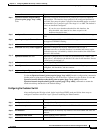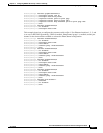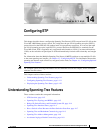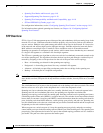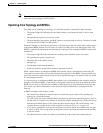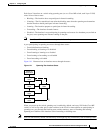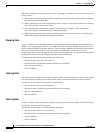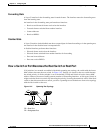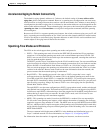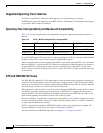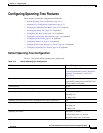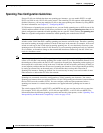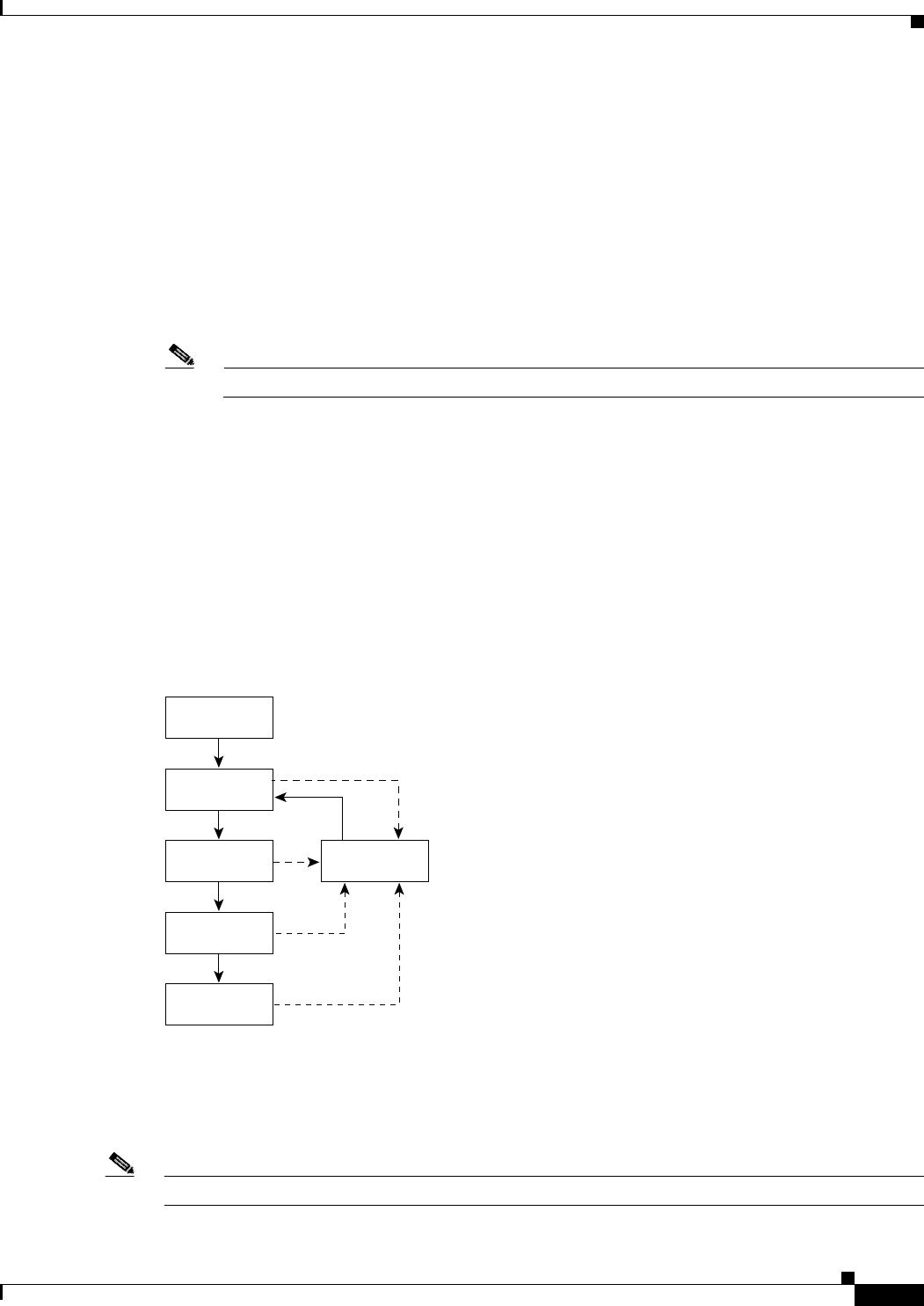
14-5
Cisco ME 3400 Ethernet Access Switch Software Configuration Guide
78-17058-01
Chapter 14 Configuring STP
Understanding Spanning-Tree Features
Each Layer 2 interface on a switch using spanning tree (or on a Cisco ME switch, each Layer 2 NNI)
exists in one of these states:
• Blocking—The interface does not participate in frame forwarding.
• Listening—The first transitional state after the blocking state when the spanning tree determines
that the interface should participate in frame forwarding.
• Learning—The interface prepares to participate in frame forwarding.
• Forwarding—The interface forwards frames.
• Disabled—The interface is not participating in spanning tree because of a shutdown port, no link on
the port, or no spanning-tree instance running on the port.
Note On a Cisco ME switch, UNIs are always in the forwarding state.
A port participating in spanning tree moves through these states:
• From initialization to blocking
• From blocking to listening or to disabled
• From listening to learning or to disabled
• From learning to forwarding or to disabled
• From forwarding to disabled
Figure 14-1 illustrates how an interface moves through the states.
Figure 14-1 Spanning-Tree Interface States
When you power up the switch, spanning tree is enabled by default, and every NNI in the Cisco ME
switch, as well as any other port in other switches in the VLAN or network that are participating in
spanning tree, goes through the blocking state and the transitory states of listening and learning.
Spanning tree stabilizes each interface at the forwarding or blocking state.
Note UNIs are shut down by default, and when they are brought up, they immediately start forwarding traffic.
Power-on
initialization
Blocking
state
43569
Listening
state
Disabled
state
Learning
state
Forwarding
state



